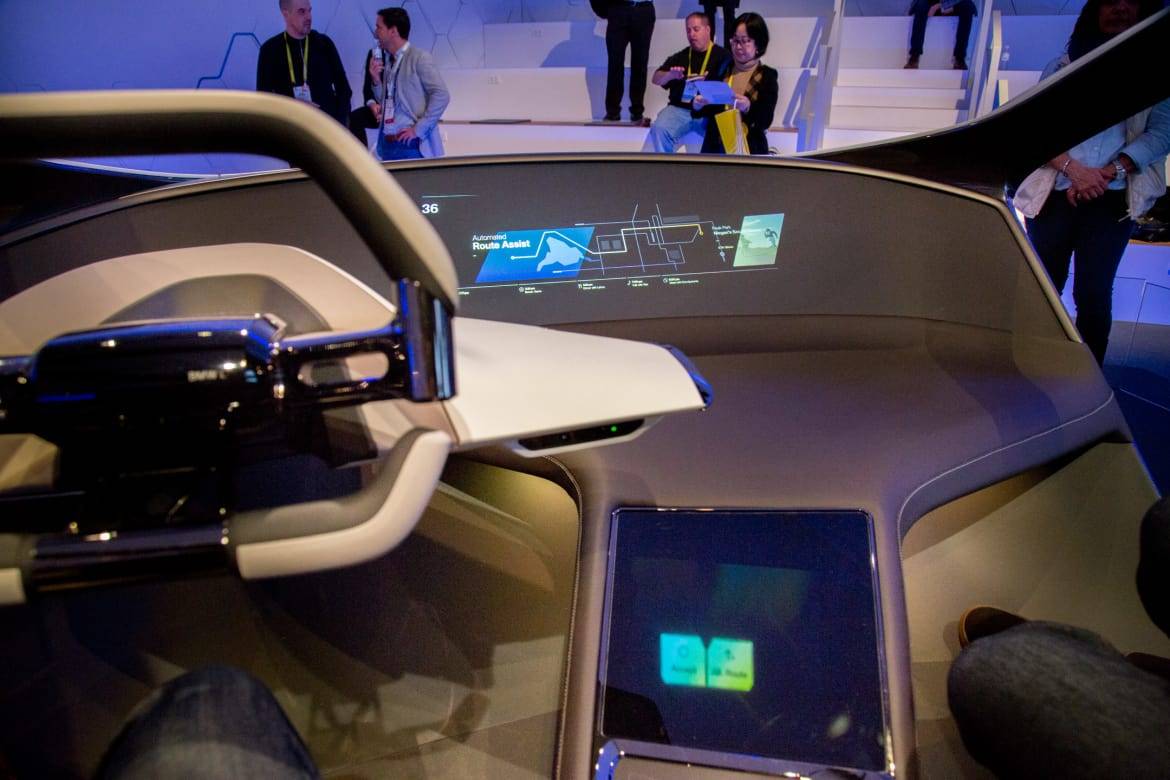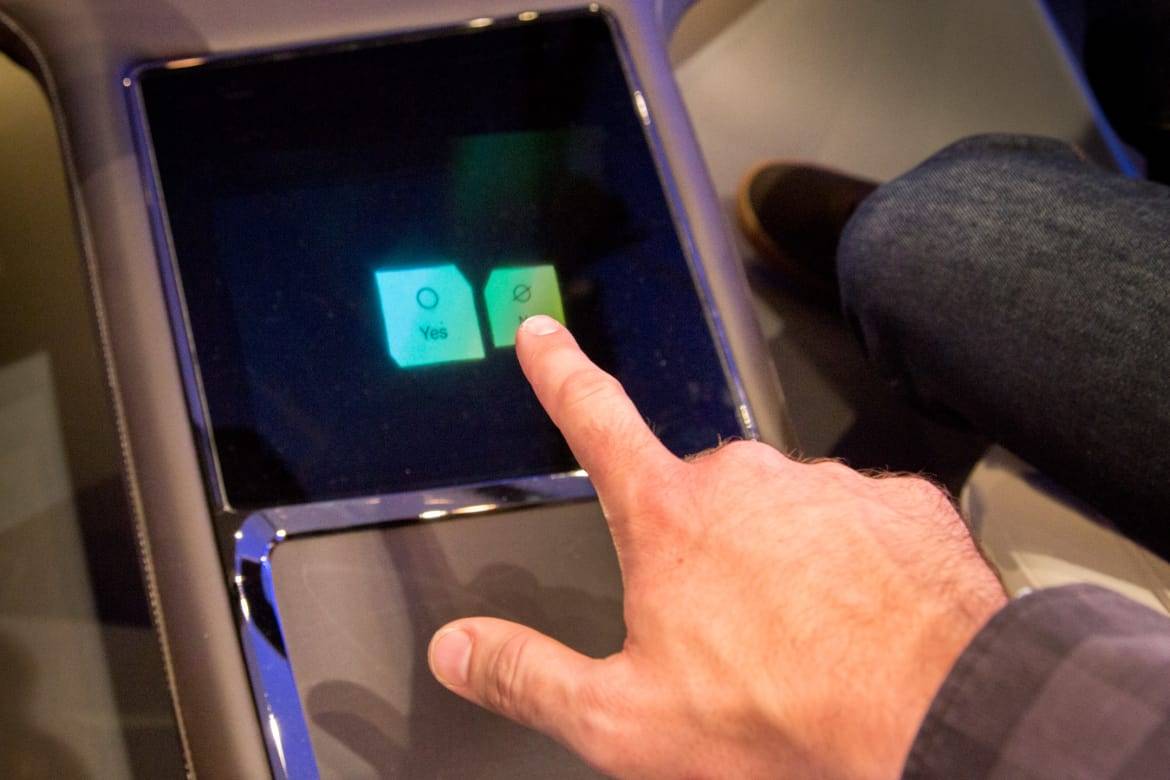BMW Demonstrates Holographic Dash at CES 2017

CARS.COM — BMW’s 3-D holographic dashboard, called HoloActive Touch, looks straight out of “Star Wars,” but it gives a real hint of the future of BMW cabins coming within the next 10 to 15 years.
Holger Hampf, head of user experience design at BMW Group, gave Cars.com an in-depth tutorial of this wildly futuristic interface during the 2017 Consumer Electronics Show in Las Vegas. “We want to prove that we deliver on our promises,” he said of HoloActive Touch and the BMW i Inside Future Sculpture design study that serves as the system’s foundation.
In operation, the HoloActive Touch controls are purposefully simple to use. Using carefully placed mirrors in the center console, the controls are projected in thin air and are visible only from the driver’s perspective. True to its claim, pressing the virtual buttons results in a soft pulse sensation at your fingertip, delivered by inaudible ultrasonic frequencies emitted by a panel in the center console. Don’t try using your whole hand or substituting a ballpoint pen for a human digit. It won’t work.

There are no virtual rotary knobs or dozens of tiny holographic buttons to choose among. At most, the driver has only two choices to make in each scenario. “I believe in very short interactions,” Hampf said.
The demonstration began with a floating starter button and then progressed toward a maximum of two commands during a demo that involved picking up a friend, answering a phone call, ordering a pair of yellow shoelaces and tuning into a Facebook Live broadcast of a youth soccer game.
The BMW i Inside Future Sculpture is a “wide-open space,” Hampf said, created partly by self-driving functions, as well as flat battery vehicle architecture coming to future generations of electric cars. This is not meant to be a completely autonomous vehicle, however. The design study features forward-facing cabin architecture and a steering wheel — though the one in this concept could, theoretically, retract into the dash during Level 4 self-driving operation.
This EV body structure allows BMW’s design team to create an open, asymmetrical cockpit, especially for passengers in the back. The backseat resembles a lounge sofa and, for those moments when you need a timeout from tech, a row of hardcover books is tucked neatly underneath.
Why should I care? We probably didn’t need the new laces or cute backstory for the demo, but BMW’s HoloActive Touch literally looks and feels like the future. The 2017 BMW 7 Series luxury sedan already features gesture-based commands for cabin functions, such as changing the radio volume or adjusting fan speeds. While the HoloActive Touch interface takes up far too much cabin space to be feasible now, the system will almost certainly be scaled down to a more manageable size within BMW’s 10-plus-year timeframe until the system reaches production.
BMW wasn’t the only one with fingertip-tickling tech at CES. Bosch has a concept vehicle fitted with a touchscreen interior that also uses touch-sensitive feedback to mimic the feel of real buttons. Part of the appeal of this design is safety-related: Unlike touchscreen controls in current cars, where the driver is often unsure if a command was touched, a touch-sensitive system’s gentle pulse lets you know you’re not pressing aimlessly onto a dash surface.
Featured stories




